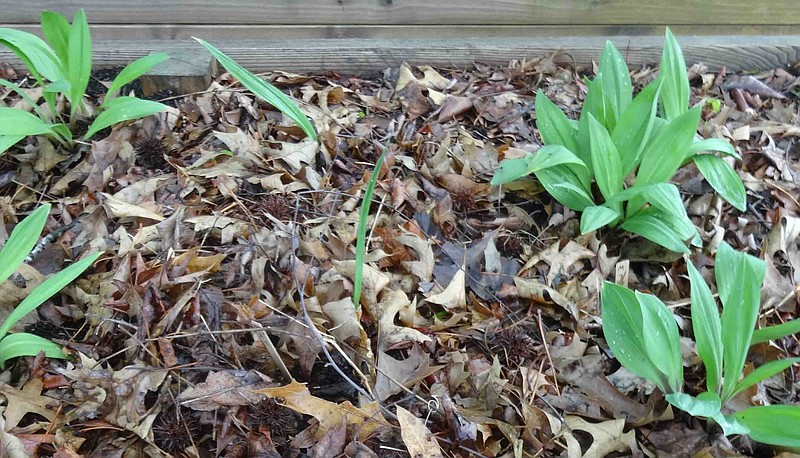Although not well-known here in Missouri, wild leek is a champion at adding an extra boost to many dishes normally cooked with garlic or onions - especially since it tastes a little like both, with the bulbs and leaves having a pleasant taste of mild onion combined with garlic aroma.
Wild leek leaves not only are extremely tasty, but add color to your meals. It is very popular with chefs in eastern states, where it is more common and goes by the name "ramps."
Wild leek leaves can be eaten cooked or raw. You can add uncooked minced leaves to create a special salad dressing or add them on top of a fresh salad.
There are two species of wild leeks in Missouri: broad-leafed Allium tricoccum and narrow-leafed A. burdickii; however, some botanists consider A. burdickii a variety of A. tricoccum. A. tricoccum is more abundant and is the largest. Both species are edible and are consumed here and in southern Canada, mainly gathered from wild populations.
Lincoln University's Native Plants Program focuses on A. tricoccum, which we consider to have more potential as a new crop. Other Missouri-native members of the onion family include wild garlic or wild onion, nodding wild onion and prairie onion. Common garlic, chives and onion are introduced (non-native) species.
In Missouri, wild leeks are reported in 12 counties, including Boone, Howard and Osage in the central region. Both species are naturally found in rich soil and moist woodlands under the canopy of trees like sugar maple, hickory and oaks. In central Missouri, the wide leaves develop in early March through April. After the leaves die back, onion-like flowering stalks with white flowers emerge in June and seeds mature in late summer to early fall.
The best time to establish leeks from seed is in late summer to fall under shady conditions. Wild leeks can be grown from seed and from bulbs. It will take six to seven years for a plant propagated from seed to mature, so we recommend buying the 2- to 3-year-old bulbs from nurseries in Missouri or surrounding states to establish your own patch.
Because these plants are mainly obtained from wild populations, digging has put this plant in the species of concern list. In 1994, gathering in the wild was prohibited in the province of Quebec, Canada. Botanists and conservationists in Missouri have legitimate concerns that these plants could be under threat of overharvest.
To discourage any digging from natural populations in Missouri, Lincoln University's Native Plants Program is conducting a study in partnership with five Missouri farmers to evaluate growth and development of wild leeks and other native edible plants, also offering workshops and cooking demonstrations to familiarize Missourians with the plants.
Wild leek leaves and bulbs are edible, but to sustainably maintain large, well-established wild populations or plantings, you should harvest only part of the leaves and few, if any, bulbs in the spring. If the bulbs are left, the plants will reseed themselves and produce more bulbs the following spring. In Missouri, wild leeks can be found in early spring at farmers markets in St. Louis and Kansas City. We hope to be able to offer it in 2017 at the Lincoln University Farmers Market.
If you are interested in learning more about wild leeks, Lincoln University is offering a free workshop Feb. 17 on campus, limited to 15 people. Make your reservation via email to [email protected] or call Natalie Benjamin at 573-681-5581. Food samples will be served, and wild leek bulbs will be available for participants.
Nadia Navarrete-Tindall has been an associate professor and native plant specialist for the Lincoln University Cooperative Extension since 2008. The Native Plants Program provides educational tools to students and the public on how to identify, grow and market native edible plants and those that are important to pollinators.
Potatoes with wild leeks
Serves five.
Ingredients:
1 teaspoon butter or olive oil
1 cup wild leek leaves, cut in pieces
Two large potatoes or two medium sweet potatoes, cut in cubes
1 teaspoon fresh ginger, diced
cup milk
Salt to taste
Pinch of nutmeg (optional)
Cilantro (optional)
Directions: Add oil or butter to a pan at medium heat. Toss leek leaves, potatoes, ginger and salt for five minutes. Add milk and let potatoes simmer for 20 minutes or until potatoes are soft enough to eat. If you want to skip the milk, cook the potatoes a little longer.


